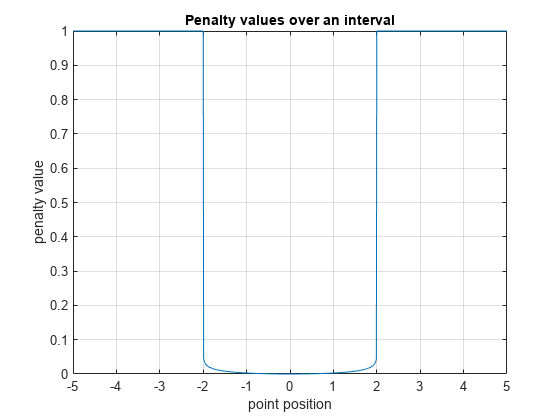barrierPenalty
Logarithmic barrier penalty value for a point with respect to a bounded region
Since R2021b
Description
p = barrierPenalty(x,xmin,xmax)p for
the point x with respect to the region bounded by
xmin and xmax. p has the
same dimension as x. This syntax uses the default values of
1 and 0.1 for the maxValue and
curvature parameters of the barrier function, respectively.
Examples
Input Arguments
Output Arguments
Extended Capabilities
Version History
Introduced in R2021b
